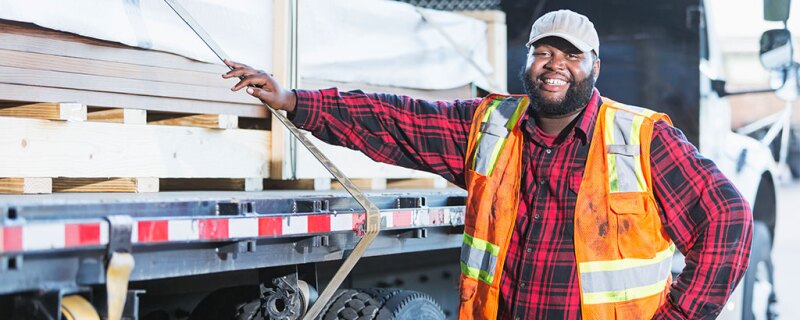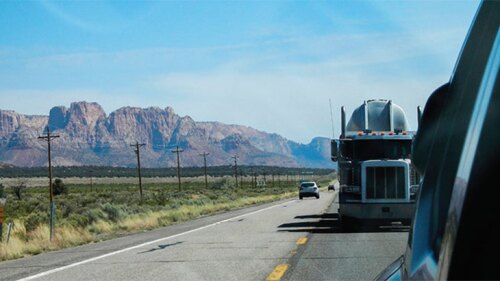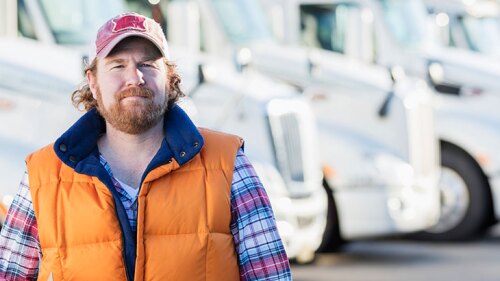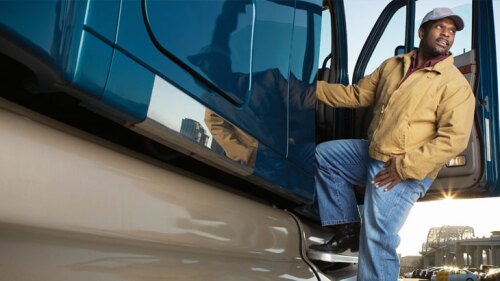Unsecured loads in a small pickup, flatbed truck, or trailer can be just as dangerous as an unsecured load on a 53-foot interstate semi-trailer. When unsecured loads fall from trailers or truck beds, they can cause cars to swerve, lose control and, ultimately, crash. They also damage vehicles and injure pedestrians and motorists. Lost loads have even caused fatalities in some instances. Traffic jams, extensive emergency department deployments, and large lawsuits often follow.
What are the steps an employer should take?
- Maintain a written cargo securement policy. These policies explain how to secure equipment, supplies, and materials when they are transported. In addition to a written policy, provide illustrations or photos for key equipment. Your cargo securement policy should also list safe driving practices for transporting a load. Have all employees sign the policy after reading and provide them with a copy of the policy after they’ve signed it. It’s also a good idea to review the policy regularly with employees.
- Provide hands-on training for everyone hauling a load. Show employees what you expect, and have them demonstrate that they understand. Not everyone’s reading and mechanical comprehension is the same, so hands-on training is typically the best way to reinforce your cargo securement policy.
- Supply proper equipment for the job. This includes supplying your employees with cargo nets, tarps, bungee cords, and straps. Provide chains and slings with ratchets for heavy equipment, and provide wheel chocks for stabilizing a trailer while loading and unloading.
- Understand cargo weight restrictions and compliance. If the combined weight of a truck, trailer, supplies, and equipment exceeds 10,000 pounds, the driver will be required to obtain the proper medical certificate, stop at roadside inspection stations, and comply with cargo securement regulations for commercial truckers.
What are the steps an employee should take?
- Make sure the parking brake is on and wheels are chocked during loading and unloading.
- Cover any load that has the potential to throw wind-driven debris – like gravel, pea stone, mulch, or refuse – out of the truck.
- Balance all loads so that weight is equal in all parts of the truck or trailer. Unequal weight can make the vehicle or trailer unstable during turns.
- Do not make sudden swerves, stops, or acceleration. Swerving can cause you to lose control. Sudden stops and accelerations cause materials to rush to the front or out the back of the trailer.
- Watch mirrors frequently, being aware of passing vehicles, especially large trucks that may create wind pressure and cause a trailer to swerve.
- Make sure the safety chains are always secured at the ball hitch when trailer towing.
- Never assume a co-worker tied down or secured the load. This is the responsibility of the driver.
- Make sure everything is tied down or kept in place from flying out of the trailer or truck bed.
- Never speed. Speeding with a loaded vehicle is very dangerous.
Your trucks and trailers are million-dollar billboards. How they are used on public roadways can advertise your business reputation and professionalism. Misused, they can advertise the actions of a careless employee, compromising years of hard work made to build a solid business reputation. Protect your investment; train and equip your employees to transport loads and equipment safely.






